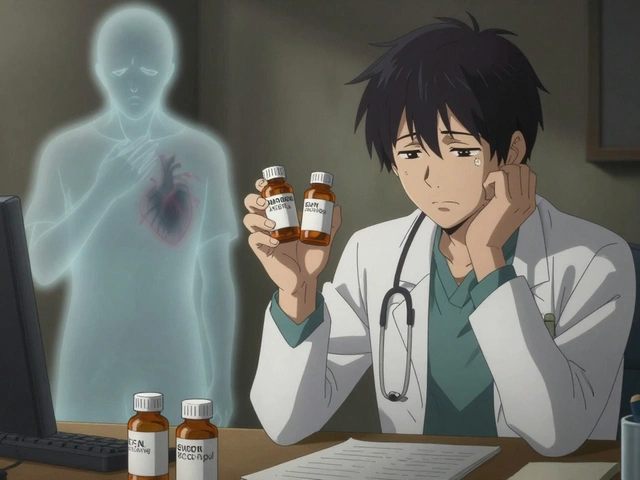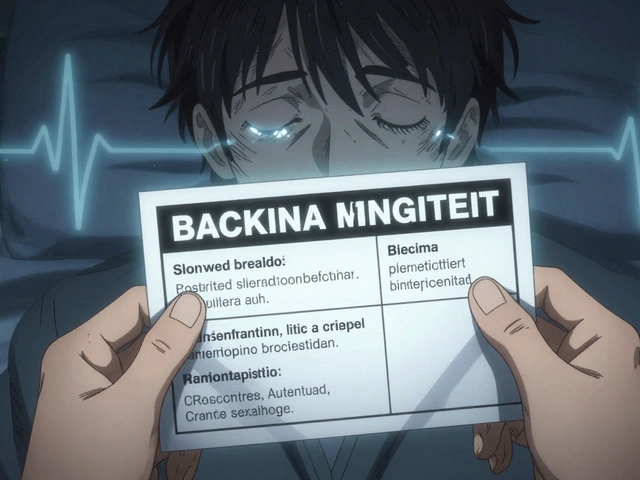Understanding Blood Clots and Varicose Veins
Varicose veins and blood clots are two common vascular conditions that affect millions of people worldwide. While they may seem unrelated at first glance, there is a connection between the two. In this section, we'll delve into the basics of blood clots and varicose veins, touching on their causes, symptoms, and risk factors. By understanding the fundamentals of these conditions, we can better explore their connection and how to manage them.
Blood clots are clumps of blood that form when blood thickens and clumps together. They can occur anywhere in the body but are more common in the legs. Blood clots can cause pain, swelling, and warmth in the affected area and, in severe cases, can lead to life-threatening complications such as deep vein thrombosis (DVT) or pulmonary embolism.
Varicose veins, on the other hand, are enlarged, swollen, and twisted veins that are visible under the skin's surface. They typically occur in the legs and are caused by weakened or damaged vein valves and walls. Varicose veins can cause pain, swelling, and aching in the legs and, in some cases, can lead to more severe complications such as skin ulcers or blood clots.
The Connection between Blood Clots and Varicose Veins
Now that we have a basic understanding of blood clots and varicose veins, let's explore their connection. While not every person with varicose veins will develop blood clots, the presence of varicose veins can increase the risk of clot formation. This is because the blood flow in varicose veins is slower and more turbulent, which can lead to blood pooling and clot formation.
Additionally, the damaged vein walls and valves in varicose veins can cause blood to flow backward and accumulate in the vein. This pooling of blood can increase the risk of clot formation, especially if the individual is immobile for extended periods or has other risk factors for blood clots, such as obesity, smoking, or a family history of clotting disorders.
It's essential to recognize the connection between blood clots and varicose veins to take appropriate preventative measures and seek timely medical intervention if needed.
Preventing Blood Clots in Varicose Veins
Understanding the connection between blood clots and varicose veins is crucial for prevention. By implementing certain lifestyle changes and seeking appropriate medical interventions, individuals with varicose veins can reduce their risk of developing blood clots. In this section, we'll discuss some of the preventative measures that can be taken to minimize the risk of blood clot formation in individuals with varicose veins.
Maintaining a healthy weight, engaging in regular physical activity, and avoiding long periods of inactivity can significantly reduce the risk of blood clot formation. Additionally, wearing compression stockings can help improve blood flow in the legs and alleviate some of the symptoms associated with varicose veins. These stockings work by applying gentle pressure to the legs, which aids in blood flow and reduces the risk of clots.
Furthermore, it's crucial to seek medical advice if you're concerned about your varicose veins or have a history of blood clots. Your healthcare provider can recommend appropriate treatment options and preventative measures to help manage your risk.
Treatment Options for Blood Clots and Varicose Veins
While prevention is key, it's essential to recognize that there are effective treatment options available for both blood clots and varicose veins. These treatments can help manage symptoms, reduce complications, and improve overall quality of life. In this section, we'll discuss some of the most common treatments for blood clots and varicose veins.
For blood clots, treatment typically involves anticoagulant medications, which help prevent the clot from growing and reduce the risk of complications. In some cases, more invasive procedures, such as thrombolysis or thrombectomy, may be necessary to remove the clot. It's crucial to seek immediate medical attention if you suspect a blood clot, as timely treatment can prevent life-threatening complications.
For varicose veins, treatment options can range from conservative measures, such as wearing compression stockings and elevating the legs, to minimally invasive procedures such as endovenous laser therapy (EVLT) or sclerotherapy. In more severe cases, surgical interventions such as vein stripping or phlebectomy may be necessary to remove the affected veins.
Consulting with a healthcare professional is essential to determine the most appropriate treatment plan for your specific needs and circumstances.
Managing Blood Clots and Varicose Veins: The Importance of Awareness and Early Intervention
As we've seen throughout this article, there is a connection between blood clots and varicose veins, with varicose veins increasing the risk of clot formation. By understanding this connection and taking appropriate preventative measures, individuals with varicose veins can effectively manage their risk and minimize the potential for complications.
It's essential to be vigilant about any signs or symptoms of blood clots or varicose veins and to seek medical advice as needed. Early intervention and treatment can significantly improve outcomes and overall quality of life for those affected by these vascular conditions.
By raising awareness and promoting early intervention, we can help reduce the impact of blood clots and varicose veins on individuals and their families, ultimately improving public health and wellbeing.





6 Comments
Charu Gupta
June 12, 2023The correlation between varicose veins and thrombotic episodes is supported by a robust body of clinical evidence. Proper anatomy and hemodynamics explain why sluggish venous return predisposes to clot formation. Maintaining optimal venous tone through compression therapy and regular ambulation mitigates this risk. Additionally, addressing modifiable factors such as weight and smoking further reduces the likelihood of deep vein thrombosis. In summary, an evidence‑based approach, complemented by lifestyle modifications, is paramount 😊.
Abraham Gayah
June 12, 2023Wow, who knew leg veins could host a secret party of clots?
rajendra kanoujiya
June 12, 2023Honestly, the hype around varicose veins causing dangerous clots is blown out of proportion. Most sufferers never see a serious thrombus in their lifetime. The literature often cherry‑picks outlier cases to push a narrative. A balanced view recognizes the risk exists but is relatively low for the average individual.
Caley Ross
June 12, 2023Okay, let’s break this down slowly. First, the idea that varicose veins are some kind of ticking time‑bomb for clots is a sensationalist take that feeds fear rather than knowledge. Second, the physiology is straightforward: damaged valves lead to venous pooling, which *can* increase stasis, but stasis alone isn’t a death sentence. Third, lifestyle factors-like sitting for hours on a plane or neglecting movement-play a far larger role than the mere presence of varicose veins. Fourth, compression stockings are a low‑cost, low‑risk intervention that actually helps many people, but they’re not a magic wand. Fifth, regular exercise, especially calf raises, promotes the muscle pump that pushes blood upward. Sixth, staying hydrated supports blood viscosity and reduces the chance of clot formation. Seventh, if you have a family history of thrombophilia, a simple blood test can identify hidden risks. Eighth, smoking cessation cuts down inflammation, which is a known contributor to both vein disease and clotting. Ninth, weight management reduces pressure on the venous system, decreasing valve strain. Tenth, if you notice sudden swelling, pain, or discoloration, seek medical attention promptly-early diagnosis can be life‑saving. Eleventh, many clinicians now recommend intermittent pneumatic compression for high‑risk patients, which is another tool in the toolbox. Twelfth, be aware that hormonal factors, such as birth control pills or hormone replacement therapy, can tilt the balance toward clotting. Thirteenth, the risk is real but manageable with a proactive approach. Fourteenth, community awareness campaigns should focus on education, not panic. Fifteenth, at the end of the day, understanding the nuanced relationship between varicose veins and clot risk empowers you to make informed choices.
Bobby Hartono
June 12, 2023I totally get where you’re coming from, but i think we need to look at the bigger picture. Even if varicose veenis are not the main villain, they still create an environment where blood can linger, and that’s not something we should ignore. Moreover, the literature shows a modest uptick in deep vein thrombosis among people with severe venous insufficiency, so dismissing it outright feels a bit hasty. Also, people often overlook simple preventative steps like wearing proper compression garb or staying on the move during long flights-those little habits add up. It’s also worth mentioning that some folks have genetic clotting disorders that synergize with venous disease, making the combo more risky than the sum of its parts. So, while the headline "varicose veins = clot" might be an oversimplification, the connection is real enough to merit attention. Let’s keep the conversation inclusive and supportive, encouraging everyone to seek professional advice if they’re unsure.
George Frengos
June 12, 2023It is commendable that the community is engaging with this nuanced topic. From a clinical perspective, the combination of evidence‑based prevention and patient education yields the best outcomes. Encouraging regular physical activity, appropriate use of compression therapy, and timely medical consultation aligns with standard guidelines. Additionally, addressing modifiable risk factors such as obesity and tobacco use complements vascular health strategies. Should any individual experience acute symptoms suggestive of thrombosis, prompt diagnostic evaluation is essential. Overall, a balanced, proactive approach fosters both safety and quality of life.